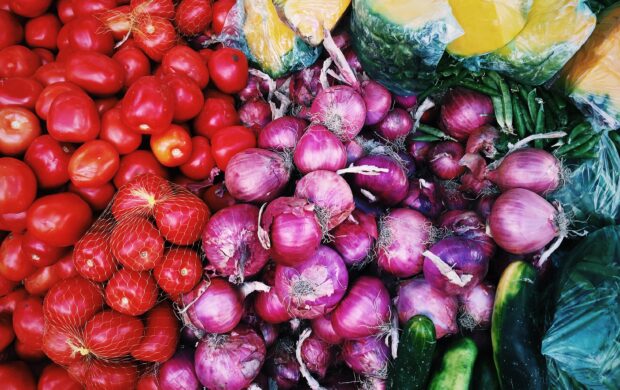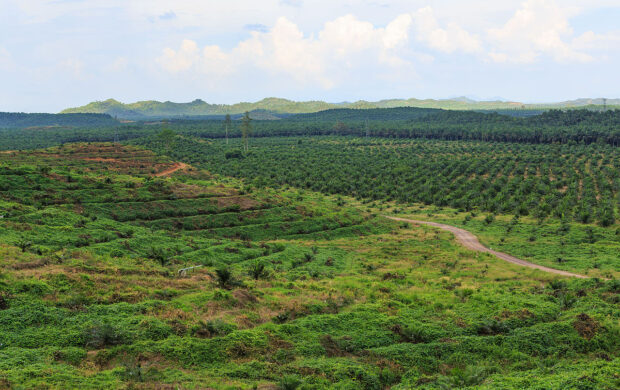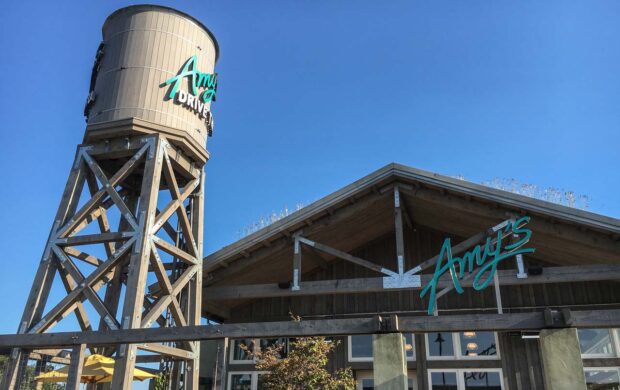The seaweed buzz hit the Masterchef kitchen when a talented, health-conscious chef aced his first round dish, wowing the judges with a range of seaweeds gracing a cod cheek. Seaweed might be a novelty in the Masterchef kitchen, but its popularity is growing. Consumers and food businesses around the world, beyond traditional markets in Asia, are becoming increasingly aware of seaweed for its nutritional benefits, such as its high-quality protein and omega-3 essential fatty acids. Hailed as a possible sustainable food hero, seaweed can grow 30 to 60 times the rate of land-based plants and does not require fresh water, fertilizer or agricultural land. If we could get more of our essential proteins and oils directly from seaweed (also known as algae: macro-algae is the stuff commonly known as seaweed and micro-algae the stuff more commonly known as algae), it seems we would be able to meet the nutritional needs of a growing population with a much smaller environmental footprint. [See ‘Seaweed: the sustainability benefits’]
This potential has not gone unnoticed by some of the world’s biggest food (and also personal care) companies, which are feeling the pressure to deliver on their commitments to reduce their environmental impact and meet their own sustainable sourcing targets. Unilever, Nestle, Danone and General Mills are all showing interest. Unilever, for example is sourcing algae for Lux products in Brazil: a supply deal it says is “aligned with [its] ambition to grow the business while reducing its overall environmental footprint, and its commitment to using only sustainably sourced agricultural raw materials by 2020”. Both Unilever and Nestle are adding similar products to pet food lines, whilst Danone and General Mills have been talking up the benefits of seaweed in recent communications.
Alongside culinary uses and to boost the nutritional qualities of animal feed, seaweed is used in many other products such as cosmetics, medicines and nutraceuticals, and fertilisers. [See ‘The industries eyeing up seaweed’] There has also been a surge of interest and investment in newer uses such as biomass fuel, bioplastics and textiles recently. Combined with the predicted boom in demand for food and feed, these new uses could drive the commercial market for seaweed to around $22 billion globally by 2024, up from $6.4 billion in 2014.
That’s some growth. Without proper management, the problems could be as significant as the benefits. Which is why, in November 2017, we saw the first Seaweed Standard, from the Marine Stewardship Council (MSC) and the Aquaculture Stewardship Council (ASC) to help “protect marine environments and secure the livelihoods of those who depend on them by recognising and rewarding sustainable and socially responsible seaweed production”. What risks might such a standard mitigate? According to spokesman James Simpson, they include:
- Coastal erosion
- Biosecurity risks, such as increasing the spread of disease, pests, and problematic non-native, species
- Harmful structural changes to ecosystems
- Biodiversity loss
- Declining water quality
- Poor working conditions and lack of protection for low-skilled workers.
The UN warned in 2016 that, without proper regulation, there is potential for conflict over marine space from different users with different requirements – from renewable energy, to aquaculture, to fisheries. The European Union is creating a common framework for marine spatial planning in the hope of avoiding conflicts and to encourage synergies between different users. The UN also flagged potential for illegal use of algicides and pesticides in seaweed production, with unknown but likely detrimental consequences for the wider marine environment.
Industry, whilst interested in the potential of seaweed, is also starting to ask questions. New seaweed products featured highly at VitaFoods 2017, for example, but commentators highlighted that “the issue of sustainability and traceability was very much a talking point amongst attendees”. Those multinationals with significant reputation for sustainability, mindful of scrutiny from NGOs and consumer activists, are no doubt keen to have confidence that their new sustainable ingredient doesn’t come with unintended negative impacts and scandals-in-waiting.
What does the new Seaweed Standard change?
Once seaweed production operations start becoming certified to the new MSC-ASC Seaweed Standard – likely in the next couple of years – consumers or commercial buyers will be able buy seaweed from suppliers who are avoiding many of the potential risks.
To get certified, operators must be able to demonstrate that they are harvesting seaweed in a way that leaves a sufficient wild population behind which is capable of regenerating before further harvesting. This is a similar principle to Forest Stewardship Standard (FSC), where harvested trees must be replaced in order to allow the forest to regenerate. Without this protection, a boom in wild seaweed harvesting could perhaps lead to biodiversity loss akin to that caused by deforestation and the rise of mono-cropping (for instance, in palm oil and soy).
As well as for wild harvests, the Standard can be used by aquaculture seaweed operations: a sector likely to see rapid growth. It requires fair treatment of workers and payment of decent wages in aquaculture and wild harvesting operations. All operations must be verified by a qualified social assessor – although requirements are flexed for small family operations, to avoid an unnecessary administrative burden.
Assessments will include interviews with workers, alongside checking documents relating to working practices, in an attempt to get past challenges of fake book-keeping that plague many social audits. At present, 80% of seaweed demand comes from Asia (although growing elsewhere), and China alone represents 54% of global production. Appalling working conditions and human rights abuses are rife in many industries but particularly prominent in some Asian fisheries. A robust approach to protecting human rights in this growing industry is an essential part of the standard, alongside the environmental protections.
Will certification prevent seaweed becoming the palm oil of the sea?
Can a voluntary certification scheme do enough to prevent seaweed becoming the next palm oil or soy and prevent the types of worker abuses which have been seen in so many agricultural and seafood supply chains? MSC and ASC know what they’re doing, and this new standard is likely to perform on a par with other best practice chain-of-custody standards. However systemic issues, such as human rights abuses, are often difficult to uncover through auditing and certification schemes, and even more difficult to resolve. The standard also relies on our scientific understanding of the role of seaweed in ecosystems, which is still emerging.
Certification does have a lot of support still amongst many of the world’s biggest multinational companies. A credible certification scheme will help these types of companies become more confident that integrating seaweed into their products can help meet their commitments to sourcing sustainable materials and ingredients. Challenges such as cumbersome administration and the resource-intensive nature of audit-based ethical sourcing programmes are, however, causing some retailers and major buyers to look beyond traditional certification schemes, particularly as they try to expand good practice from a few product lines to a majority of what they source. Jurisdiction-based approaches, for example, which aim to improve standards across a whole region or country rather than tackling issues one supply chain at a time, are gaining increasing interest.
Additional costs of verifying transactions in certification schemes be burdensome, particularly for small suppliers. It’s great to see MSC and ASC working together on this, avoiding overlapping standards that operate in some sectors. It’s not uncommon for corporate buyers to ask for triple certified coffee! Hopefully they will continue learning lessons and explore new technologies which can help cut costs of traceability systems and reduce risk of fraud.
One thing to watch out for is that a new seaweed ‘gold rush’ does not distract attention from other sustainable solutions which can help us meet the needs of a growing population without the need to conquer a new frontier in the ocean. There’s a strong argument that we don’t need expansion of agricultural food production (on land or sea): we could meet all our nutritional needs if we stopped wasting the third of food which is wasted globally every year, or cut down on highly resource intensive foods such as meat, dairy and heavily processed ‘empty calorie’ foods. And we should temper our stampede towards biofuels by remembering the potential of radical energy efficiency.
That said, scaling up seaweed use quickly can allow us to harness the sustainability benefits in a useful timeframe, given the ticking climate change clock. Getting large companies on board can help with this – and so I hope the new MSC-ASC Standard will encourage confidence in this emerging sector, highlighting potential pitfalls and providing a practical tool to help us avoid them. By highlighting how to source seaweed sustainably, the Standard can shine a light on unsustainable practices which may, if not addressed, prevent us harnessing the huge potential benefits of seaweed.
The Standard aims to address the rights of maritime space users, and requires the involvement of local communities but it can’t transform an industry on its own. Ultimately, better government regulation and management of maritime space will be critical – alongside innovation to streamline traceability systems and to improve the efficiency of harvesting and production.
The drive towards a sustainable seaweed industry is just beginning.









Join discussion